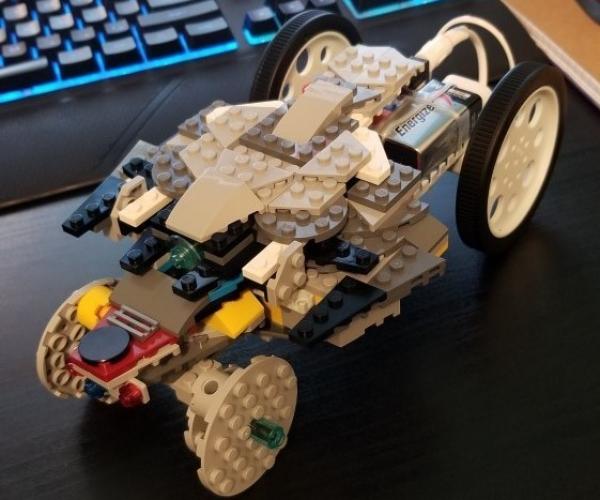
Pivoting Student Employees from Service Points to Online Projects During COVID-19
Our student employees are key players in the libraries. They are typically the first and last faces you see when visiting any of the branches. They make our jobs as full-time staff easier, and our goal is to give them skills and experiences that can be transferred to their future careers. When campus closed for the semester due to the COVID-19 outbreak, we had to ask ourselves: “How can we provide our student employees with as much stability as possible?”
Initially, our student employees were given the same options as full-time staff. They could continue to work at public service points at the Central Library (the branch libraries were closed completely), in staff-only environments, or opt to work from home. We also allowed them to take a break for the rest of the semester and return in the summer or fall. In Experiential Learning & Undergraduate Success (ELUS) and User Success & Services (USS), the two library departments with the most public-facing student staff, we had about 20 students who preferred to work at home while about 50 of them chose to work in the library, either at a public service point or in a staff-only environment.
Before we could even get all of our students re-situated, it was announced that students were no longer able to work on campus and that only one service point would remain open in Central Library; we suddenly had to get our entire student staff working from home. We reached out to other departments and quickly generated a list of 26 work-from-home projects. We allowed our student employees to select the project that interested them the most, connected with them with their project lead, who provided further instructions on the project.
We also created a work from home group in Microsoft Teams that acts as a hub for all online projects. Each project has a separate channel where leads and student employees can share files, conduct meetings, and provide intermittent updates. Students were asked to provide a work plan outlining their work schedules, assigned projects or responsibilities, and daily updates for their direct supervisors. This was also added to Teams so supervisors could see updates in real-time and quickly provide feedback to their direct reports.
Project Example: Software and K-12 Robotics & Electronics Learning Kits – Martin Wallace
Every challenge brings new opportunities. Most of us have back-burner projects that we simply can’t find time for in our busy day-to-day routines. The Experiential Learning and Undergraduate Success (ELUS) department at UTA Libraries is in the planning phase for a department remodel and rollout of new services, and a part of that includes training our student employees on a variety of software and robotics & electronics kits, so they will be prepared to assist library visitors seeking help with these products. The majority of our student employees in ELUS are front line service point staff, with little time for such in-depth training. Before COVID-19, I was allowing each of my direct reports an hour or two per week for training. With the emergence of COVID-19, the urgency to get our staff (including student employees) working from home, and the closure of all but one service point in our libraries, we were presented with a Golden Opportunity to pivot our student employees to in-depth, hands-on training, preparing them for the new services we plan to begin offering.
When the work-from-home efforts first began, while students were still out on spring break, library leadership created a form allowing full-time staff to submit their back-burner projects that could be worked on by our student employees from their homes. I took the opportunity to submit my need to better train my students in preparation for the new services. When my project was approved, I gathered a list of software that we had identified as high-use and that we had inadequate (or non-existent) in-house expertise to support. This list included various 3D Modeling software, the Adobe Creative suite, and audio & video editing software. The Libraries also has a collection of K-12 robotics and electronics kits, and I thought these would give my student employees a chance to learn some basic robotics and electronics concepts and applications. I gave my students the options of learning software only (for students who could not make it to campus to pick up a kit), or they could choose the kits, or do both. I asked each of them select up to three products each.
Student employees were given the choice of 26 different projects to work on. Two of my own direct reports selected my project, and four students that are not my direct reports selected my project, so I currently have six students working on the project. I believe that when the word gets out that my project is creative and fun, other students will want to switch to my team! My team of six student employees are now deep-diving into the products of their choice. These include the software Adobe Photoshop, Adobe After Effects, SolidWorks, AutoCAD, 3DS Max, Fusion 360, Lumion, SketchUp, and Audition, and include the littleBits, Bloxels, and Ozobot Evo K-12 learning kits. One of them is also using the library’s greenscreen room along with video editing software to learn about greenscreen editing.
The ultimate goal is for my student team to become proficient with the software and/or kits that they selected by the beginning of fall semester. The way I am approaching this goal is to have each of them spend their work hours deep-diving into training, using LinkedIn Learning and any other resources that they can find online. As they learn, they are tasked with writing “quick-start guides” that provide step-by-step instructions for the most common functions of the product. Even though most of the products already have ample quick-start guides and online tutorials, my students will gain better insight and expertise by writing their own documents. The second phase of the project will be a skills-share, where each of the students will be tasked with teaching the rest of us what they learned. In the third and final phase, students will create lesson plans for their selected products. This will happen near the end of spring semester, and the lesson plans will be published to our Research Commons.
For those student employees that plan to continue working for the Libraries over summer semester, I am going to send each of them an Arduino with projects kit, a Raspberry Pi with projects kit, or a small, inexpensive quadcopter. The students will get their item of choice, and spend the summer learning, skills-sharing, and writing lesson plans on their selected item.
So far, the biggest challenge we have faced has been getting licensed software to the student employees. Our campus Office of Information Technology (OIT) has been very helpful with this, as they know what software and what types of licenses are available. Some software is designated as “Lab Only” whereas other software is available for students to install on their computers at home. Some of the software is not available at all, but OIT and the Libraries are working with the students to get the appropriately licensed software if we don’t have an existing license. In fact, the first week of the project was pretty much us learning about how to acquire licensed software—a learning experience in itself, because I had the students do the work of attaining licensing rather than doing it for them.
Conclusion
To say that COVID-19 changed everything would be an understatement. Overall, this has been a learning experience for all of us. As full-time staff, we have had to adapt quickly in a rapidly changing situation. Our student employees found themselves facing changes not only in their work but in their education as well. They were patient while we figured this out, understanding when plans changed overnight, and enthusiastic to help the libraries in any way possible. Transitioning to online projects has given our student employees opportunities that they may not have otherwise had at the service points. They are networking with other departments, improving their skillsets, and developing new ideas to enhance library services.

Add new comment